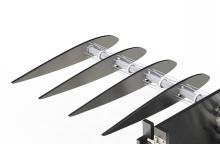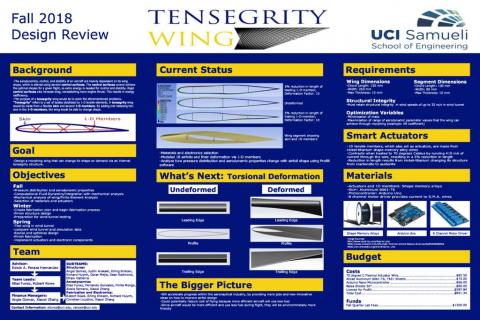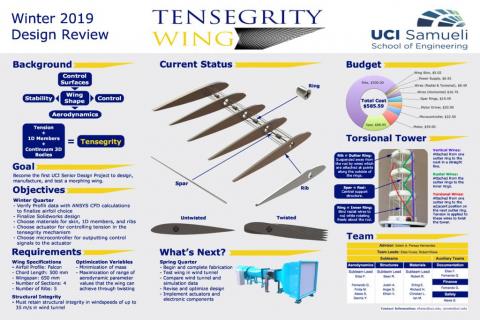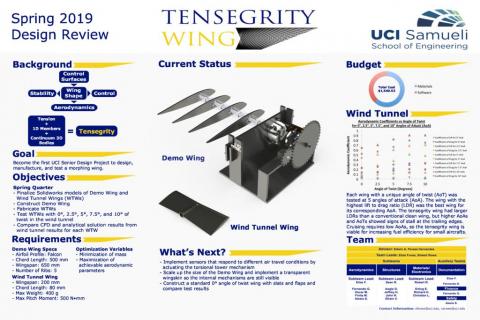Tensegrity Wing
Background
The aerodynamics, control, and stability of an aircraft are heavily dependent on its wing shape, which is altered using control surfaces (ailerons, flaps). These control surfaces cannot achieve all the optimal shapes for a given flight section (take-off, cruise, landing) or flight conditions, so extra energy is needed for control and stability. Rigid control surfaces also increase drag, necessitating more engine thrust and therefore resulting in energy inefficiency. Tensegrity structures are comprised of 1D members such as cables and wires connected to rigid or flexible bodies. The shape and/or stiffness of a tensegrity structure can be controlled by adjusting the tension of the 1D members. The tensegrity wing is comprised of an outer continuous skin containing internal 1D members, which can be contracted or stretched to control the wing shape. It is hypothesized that the tensegrity wing will allow for higher aerodynamic efficiency when compared to conventional wings with control surfaces that have limited mobility. Since all the internal actuators and structural members of the tensegrity wing are 1D members such as cables and wires, it is also hypothesized that it will be lighter than conventional wings. Due to these potential advantages, the team will computationally design and analyze a tensegrity wing, and then fabricate a functional prototype to validate our simulations and hypotheses. It is expected that the tensegrity wing concept will potentially revolutionize the design of wings for UAVs and small aircraft.
Goal and Objectives
Goal: The goal of this project is to become the first UCI Senior Design Project to design, manufacture, and test a morphing wing.
Objectives:
Fall
- Determine the best base airfoil
- Determine method of morphing the wing
- Selection of materials and actuators
Winter
- Finish structural design
- Create fabrication plan and begin fabrication process
- Preparation for wind tunnel testing
Spring
- Finish wing fabrication
- Implement actuators and electronic components
- Test wing in wind tunnel
- Compare wind tunnel and simulation data
Conclusions
The 2018-2019 Tensegrity Wing team was able to design, manufacture, and test the first Tensegrity Wing model in their first year as a UCI Senior Design Project. The wind tunnel tests conducted by the team showed that the model performs better than a clean conventional wing, and now the next step will be to test the Tensegrity Wing model against the conventional wing with flaps and slats.
Contacts
Faculty Advisor: Professor Edwin Hernandez (eperazah@uci.edu)




